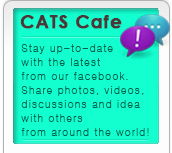Communication
Home > Special Education > Transition
Communication is the exchange of ideas with another person through expressive and receptive language.
Expressive language is defined as the ability to convey one’s thoughts into words with meaning. It includes not only words, but also the grammatical rules, gestures, and body language. Receptive language is the understanding of what is being said. This includes the understanding of both words and gestures. All of these skills are necessary to be an effective communicator. However, students with disabilities show impairments when communicating through expressive and receptive language.
Facts:
1. Everybody communicates through behavior and behavior serves a communicative function.
2. Students with moderate/severe disabilities are likely to have more difficulties in communication and when they have less communication skills, they seem to have more frequent challenging behaviors.
3. Recent literature substantiates the premise that a relationship exists between communicative intent and the function of the behavior.
4. The function of a challenging behavior is related to these specific communicative purposes: to obtain attention, to escape or avoid a request, to procure an object, and to receive sensory feedback.
5. If the student’s communication skill limits his/her controlling the environment, frustrations may occur and challenging behavior may follow.
6. If such behavior is effective at getting what he/she wants or needs, it may be more likely to occur again in the future.
How can we improve communication for people with disabilities?
• Start early to build a communication channel.
• Create a communication profile: A comprehensive list of the child’s communication forms and functions. They are the methods the child uses to communication (spoken, written, sign language, facial expression, etc).
• Identify the communication patterns of class routines: The teacher develops communication expectations and opportunities that occur within every situation and activities during class.
• Integrate the communication profile into school routines and the curriculum: The child will use his/her communication method to complete and be part of school activities.
• Expand the communication profile: Create other opportunities so that the child can expand his/her skills in other setting.
It is important for the educators and parents to provide meaningful opportunities to improve communication skills to be effective communicators.
When a child has difficulty speaking due to muscles and speech mechanism (e.g. cerebral palsy, cleft palate), s/he needs to be carefully evaluated for appropriate augmentative and alterative communication devices (AAC) as early as possible. Speech is not the only way to communicate. Some people will use sign language. Some people would be using the communication board with real objects, pictures of objects, drawing, and words. A choice of symbols will be based on the level of individual child’s understanding. Nowadays, there are various computer programs. creating pictures that can be used in communication. Many app programs are available that are compatible with smart phones.












